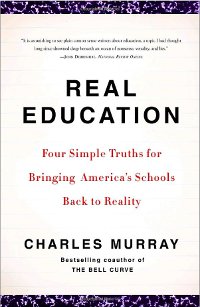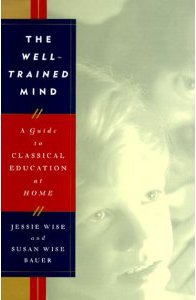Day 51 of 1000
I found a link to a blog post by a South African Homeschool mom named Taryn in one of Luke’s posts over at the Sonlight Blog. It was a great read and I recommend you read the whole thing. There was a statement at the end of the post that caught my attention. Taryn said, “And we don’t know if we’ll do this all the way to grade 12.” That was exactly our thinking for the first five years of homeschool. Due to a serendipitous set of circumstances, we changed our minds. We enrolled our kids in college at ages fourteen and sixteen when their normal school trajectory would have put them in their freshman and junior years of high school. We have no illusions that our children are more brilliant than other children, we just found our self in a set of circumstances that has to have played itself out amongst at least some of the other homeschoolers around the world. This post explains what happened.
We moved to Raleigh, North Carolina before our son, Christian’s sixth and our daughter Kelly’s eighth grade years of school. When we signed up our homeschool through the North Carolina Department of Non-Public Education, we found that the ACT counted as one of the national normed annual tests accepted for compliance with North Carolina’s annual testing law. We also found that Duke University had something called the Talent Identification Program (TIP). The TIP program provides an opportunity for all seventh graders who have received a score in the 95th percentile on any nationally normed standardized test to take the ACT or the SAT. The purpose of the testing is to identify and target students who perform very well on the tests so they can be given opportunities to enrich their education. Many schools in seven Southern states participate in the program.
The upshot is that Christian scored high enough on the test to receive state-wide honors in every test category. There is a nation-wide category he did not receive, but nevertheless, he performed well. In the meantime, Kelly had taken and passed College Level Examination Programs (CLEP) tests that gave her college credit for Freshman College Composition (6 credits) and Spanish (2 years). I have written fairly extensively about these and the other tests she and Christian took here. By the time Kelly finished the tenth grade she had passed a bunch of those tests including pre-calculus. Since it was clear Kelly and Christian could perform at a college level, I decided to put them in a class or two the next year so I started checking with the local community college.
Fortunately for us, the community college said kids under age 16 could not “dual-enroll” there unless a parent sat through classes with them. Dual-enrollment is a category of students who are still in high school, but want to take a few classes at the community college without going through the formal, full-time enrollment, admissions process. That meant Christian could not dual-enroll without Lorena to sit there with him through every class. In addition, classes available to dual enrollment students was very restricted. There were very few classes Kelly wanted or needed to take that were available to her.
We were very frustrated until it dawned on us that both the kids probably qualified for full admission as degree seeking students. There are no age or class restrictions for students admitted in that category. It was no trouble at all to enroll the both of them. Kelly enrolled in Calculus I because she had passed the Pre-Calculus CLEP test, but Christian had to take a math placement test. He was only half-way through Thinkwell Precalculus (from Sonlight!), but did well enough on the test that they wanted him to also start in Calculus I. We signed them both up for 12 credits for the first semester and, two semesters later, they are up to 16-17 hours per semester that they can handle if they work hard. We still do a few homeschool things when time permits, but they keep pretty busy with their homeschool work.
It has been very fun to hear their stories about their community college experience. Socially, the transition was both fun and enlightening for the kids. Most homeschools prepare students to function effectively with even the most eclectic groups of people. Students, faculty, and staff at most community college certainly qualify to be characterized as eclectic. The kids most enduring friend at the school is a 28 year old, recently married, Iraq War veteran working on the first two years of an engineering degree. They have had Marxist, feminist, conservative, Christian, brilliant, and clueless professors. There are plenty of homeschoolers and and other students in the school from 17 to 70 years of age.
So, if you are undecided about whether to homeschool through the 12th grade, reserve judgement about where they might go after homeschool and when they might go there. Even after junior high, a move into traditional or government high school might just be a step backwards.
 We caught the last half hour of the Republican Presidential Debate in Las Vegas last night after church. Kelly made the comment that she wished Paul Ryan would have been there. I agreed with her. We also agreed that CNN and hard-left commentator, Anderson Cooper, famous for his extreme partisanship should not be in same building as a Republican debate, let alone moderate one. Still, I would vote for any of the people on the stage, with the possible exception of Ron Paul, over Obama (I think I would move to Mexico to help the fight against the drug cartels if that was the choice). It would be awfully hard to cast a vote for Mitt Romney, but I would hold my nose and do it. Any of the others would be great.
We caught the last half hour of the Republican Presidential Debate in Las Vegas last night after church. Kelly made the comment that she wished Paul Ryan would have been there. I agreed with her. We also agreed that CNN and hard-left commentator, Anderson Cooper, famous for his extreme partisanship should not be in same building as a Republican debate, let alone moderate one. Still, I would vote for any of the people on the stage, with the possible exception of Ron Paul, over Obama (I think I would move to Mexico to help the fight against the drug cartels if that was the choice). It would be awfully hard to cast a vote for Mitt Romney, but I would hold my nose and do it. Any of the others would be great.



 I texted Kelly and Christian a message about reports they had due in their writing class this morning. The name of the class is Argument-Based Research and it is taught by a professor in the community college English department who seems to personify everything that went bad with the 1960’s. Kelly thinks he is a little older than I. I am always interested to hear what happens in this class because it is usually interesting, almost always a train-wreck, and almost never has anything to do with writing. Here is the text message exchange between the three of us from a little earlier this morning:
I texted Kelly and Christian a message about reports they had due in their writing class this morning. The name of the class is Argument-Based Research and it is taught by a professor in the community college English department who seems to personify everything that went bad with the 1960’s. Kelly thinks he is a little older than I. I am always interested to hear what happens in this class because it is usually interesting, almost always a train-wreck, and almost never has anything to do with writing. Here is the text message exchange between the three of us from a little earlier this morning:
 Nineteen years ago, my wife and I were married in an amazing half-Gringo/half-Mexican, wedding at
Nineteen years ago, my wife and I were married in an amazing half-Gringo/half-Mexican, wedding at 

